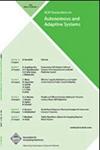Improving the Effectiveness of Testing Pervasive Software via Context Diversity
IF 2.1
4区 计算机科学
Q3 COMPUTER SCIENCE, ARTIFICIAL INTELLIGENCE
引用次数: 22
Abstract
Context-aware pervasive software is responsive to various contexts and their changes. A faulty implementation of the context-aware features may lead to unpredictable behavior with adverse effects. In software testing, one of the most important research issues is to determine the sufficiency of a test suite to verify the software under test. Existing adequacy criteria for testing traditional software, however, have not explored the dimension of serial test inputs and have not considered context changes when constructing test suites. In this article, we define the concept of context diversity to capture the extent of context changes in serial inputs and propose three strategies to study how context diversity may improve the effectiveness of the data-flow testing criteria. Our case study shows that the strategy that uses test cases with higher context diversity can significantly improve the effectiveness of existing data-flow testing criteria for context-aware pervasive software. In addition, test suites with higher context diversity are found to execute significantly longer paths, which may provide a clue that reveals why context diversity can contribute to the improvement of effectiveness of test suites.通过上下文多样性提高普适软件测试的有效性
上下文感知的普及软件能够响应各种上下文及其变化。上下文感知功能的错误实现可能导致具有不利影响的不可预测行为。在软件测试中,最重要的研究问题之一是确定测试套件的充分性,以验证被测软件。然而,现有的测试传统软件的充分性标准并没有探索串行测试输入的维度,也没有在构建测试套件时考虑上下文的变化。在本文中,我们定义了上下文多样性的概念,以捕捉串行输入中上下文变化的程度,并提出了三种策略来研究上下文多样性如何提高数据流测试标准的有效性。我们的案例研究表明,使用具有更高上下文多样性的测试用例的策略可以显著提高上下文感知的普适软件的现有数据流测试标准的有效性。此外,具有较高上下文多样性的测试套件被发现执行的路径明显更长,这可能为揭示上下文多样性为什么有助于提高测试套件的有效性提供线索。
本文章由计算机程序翻译,如有差异,请以英文原文为准。
求助全文
约1分钟内获得全文
求助全文
来源期刊

ACM Transactions on Autonomous and Adaptive Systems
工程技术-计算机:理论方法
CiteScore
4.80
自引率
7.40%
发文量
9
审稿时长
>12 weeks
期刊介绍:
TAAS addresses research on autonomous and adaptive systems being undertaken by an increasingly interdisciplinary research community -- and provides a common platform under which this work can be published and disseminated. TAAS encourages contributions aimed at supporting the understanding, development, and control of such systems and of their behaviors.
TAAS addresses research on autonomous and adaptive systems being undertaken by an increasingly interdisciplinary research community - and provides a common platform under which this work can be published and disseminated. TAAS encourages contributions aimed at supporting the understanding, development, and control of such systems and of their behaviors. Contributions are expected to be based on sound and innovative theoretical models, algorithms, engineering and programming techniques, infrastructures and systems, or technological and application experiences.
 求助内容:
求助内容: 应助结果提醒方式:
应助结果提醒方式:


